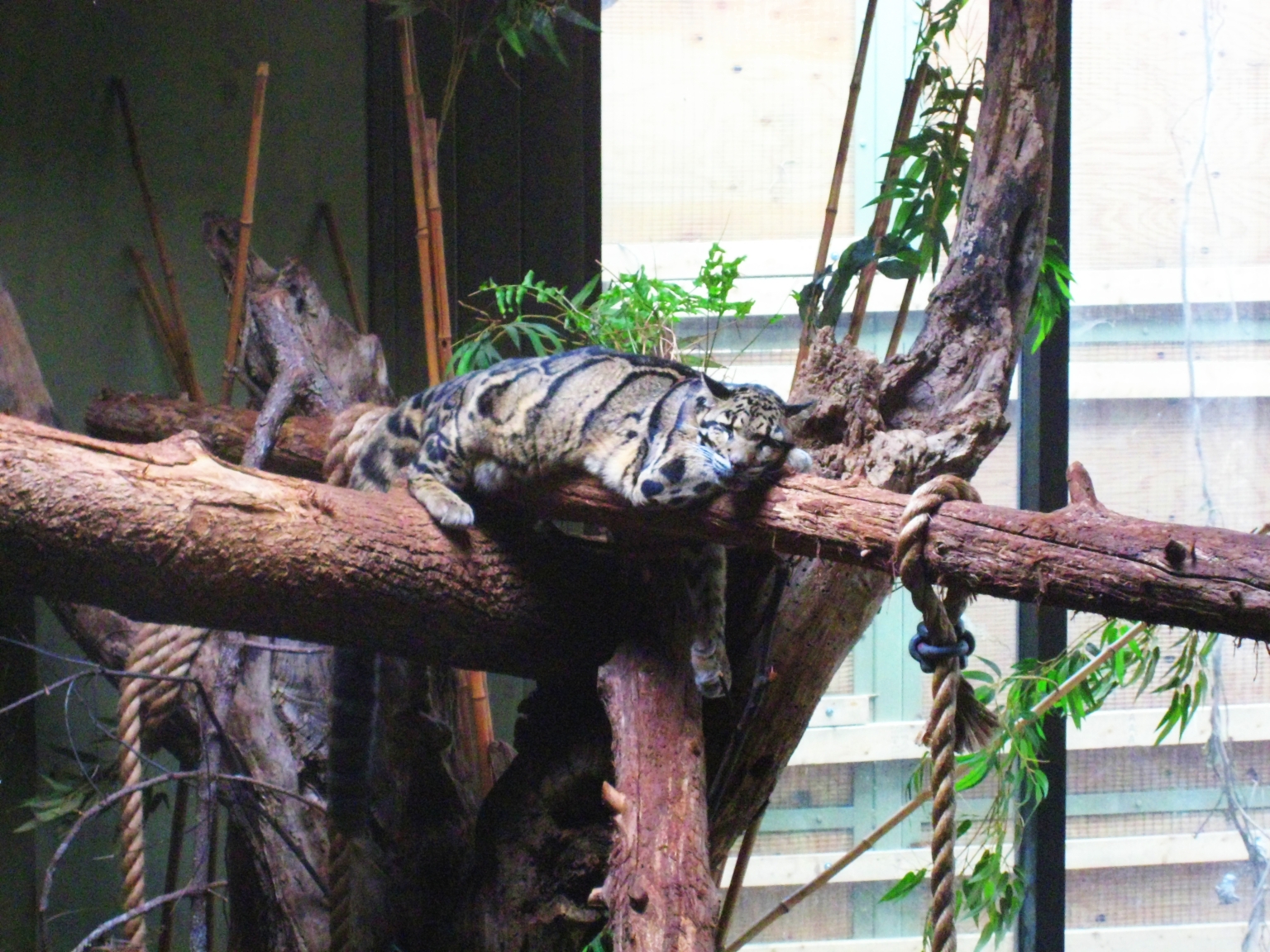|
|
THE MECHANISMS OF ARBOREAL MOVEMENT

A clouded leopard resting on a tree, copyright Toronto Zoo January 08.
Clouded leopards have evolved many phenotypic and anatomical features that aid them in climbing trees. Clouded leopards are named after their yellow-to-gray covered coat containing cloud-like markings. This coat pigmentation allows them to easily camouflage with their surroundings, which tend to be densely forested (Allen et al. 2011).
Clouded leopards are incredibly agile climbers. Their long bodies, stocky body structure, and long tails (approximately 65 cm) allow these felines to gracefully move around trees by helping to lower their center of mass and reducing the likelihood of tipping over (Day and Jayne 2007). Additionally, their retractable claws allow them to easily pierce tree bark and grasp prey. Arboreal carnivores, in general, exhibit relatively more curved claws, longer proximal phalanges, and shorter metatarsals than do terrestrial taxa (Van Valkenburgh 1987). It has been speculated that the clouded leopards have a more crouched fore- and hindlimb posture and move with flexed muscles to aid with locomotion in trees (Day and Jayne 2007). This also aids them in hunting; modern Felidae species stalk their prey until they are able to close in on it because they tire quickly despite the fact that they are capable of great speed (Martin 1980). The small size of the clouded leopard aids this particular type of locomotion and hunting strategy.
An arboreal habitat can pose many challenges to the range of behaviours an organism can have. Clouded leopards, however, have evolved many novel and exciting ways of solving these problems. They would thus make a good model organism to study many facets of this environment, from niche occupation to physiological adaptations.
This video explains the various ways in which a clouded leopard adapts to its environment: link.
|
